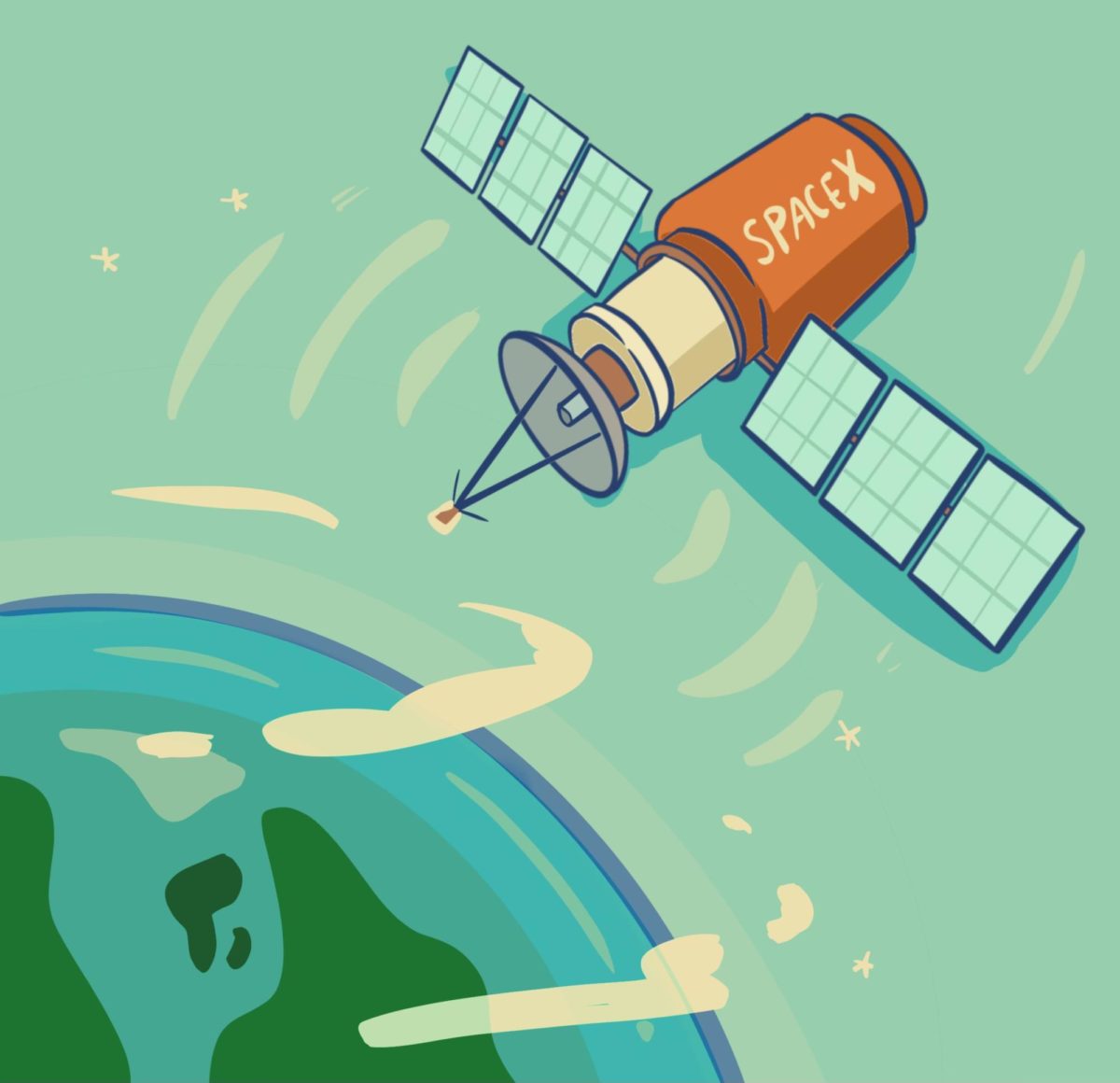Possibly mistaken for UFOs or comets, the mysterious single-file line of “stars” rapidly moving across the night sky are actually Elon Musk’s Starlink satellites. The multi-million dollar American aerospace company, SpaceX, has invested countless resources into launching their top-of-the line technology into our atmosphere. Launched in 2019, the Starlink program is the largest satellite mega-constellation orbiting Earth. SpaceX has successfully launched 4,519 satellites into orbit, currently providing coverage for over 60 countries.
SpaceX’s mission aims to create a low-cost worldwide network that is attainable around the globe. Plans of finalizing and releasing the program as a mobile phone service after 2023 are speculated, yet the mission is still far from reaching its full potential. If successful, this service will provide cellular connection to remote locations and massively improve global communication. This could benefit a range of fields including international transportation, military communication, development of third-world countries, and global exchange of information.
These are not ordinary satellites. The key differences in Starlink technology is the size, proximity to Earth, and self-reliance. Weighing 1760 lbs, the second generation of the finalized satellite is triple the weight of its original counterpart. Such weight lends the satellite structural integrity that allows for a life-span of approximately five years, after which the mechanism will steer itself into the atmosphere, where it will burn up. The biggest game-changer about this program is how close these satellites are to Earth. According to Starlink.com, the satellites are only 550 km away; their proximity allows for low latency, meaning faster transmission, approximately 25 milliseconds compared to the average 600 millisecond speed of other satellites. Additionally, this quality allows them to orbit Earth at an astonishing rate. Within 90 minutes these satellites are able to circumvent the planet, returning very near to their original location. This is why sightings are so common and attainable twice within two hours if you stay in one location.
“I think a major advantage of global service could be improvements to emergency medical communication, allowing faster response to dire situations,“ junior Kyle Rundel said.
Although this program has the potential to be massively beneficial, there are also downsides. Astronomers’ main concern with the low orbiting satellites is the disruption they cause to space observations. Their bright lights, commonly mistaken for stars, can block the view of distant masses as well as distort views with light pollution. Many conspiracy theories and fake news have spread due to spottings of the peculiar linear formation from the ground, ranging from alien abductions to bomber jets. China has even stated its belief that the Starlink satellites are intended for the U.S. military to use in Ukraine.
“I was driving through Briones when I looked up and saw a weird string of lights passing across the sky. I had no idea what they were because they looked so bizarre, so naturally I thought they were UFOs,” junior Ariana Caragol said.
Not only do these devices hinder optical observations, but they can also get in the way of radio frequencies, muddling and even drawing out signals coming from deeper in space that astronomers look for. Another large problem is orbital congestion. This increase in the amount of objects in such close proximity to Earth can cause back-up that’s proven to cause stalling in connection, as well as being one of the leading causes of collision. Spaceflight safety experts report satellites as the number one collision hazard in Earth’s orbit, and records have reported 50,000 instances where Starlink satellites were forced to move to nearly avoid collision since 2019.
The essential question is whether or not the potential benefits outweigh the risks posed by this new technology. In the near future, if executed properly, SpaceX could deliver us global network, becoming the first ever to do so. Keep your eyes open and your head up to see for yourself what the future could hold.














